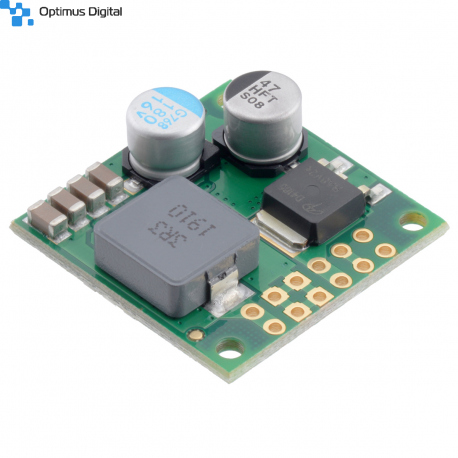Dupa plasarea solicitării de comandă, in sectiunea Istoric puteti vedea cate solicitări de comandă mai avem de procesat inaintea dumneavoastra
Program de lucru: Luni - Vineri 9:00 - 18:00, pauza 13:00 - 14:00.
Se efectueaza lucrari de mentenanta la site si pot aparea erori. In cazul in care intampinati erori va rugam sa reincercati mai tarziu.
Ridicarea personala este disponibila pentru comenzile achitate in avans. Se pot ridica dupa ce sunt pregatite.
Niciun produs
 Mărește
Mărește
Pololu Sursă Coborâtoare 9V, 5A D36V50F9
0104110000071330
Produs nou
Pololu Sursă Coborâtoare 9V, 5A D36V50F9
Acest produs nu mai este in stoc
- Scrie o recenzie
- Elimina acest produs din lista mea de favorite.
- Adauga acest produs la lista mea de favorite.
- Imprimă
Informații
Pololu Sursă Coborâtoare 9V, 5A D36V50F9
Recenzii
Clienții care au cumpărat acest produs au mai cumpărat:
-

Pololu Sursă...
Pololu Sursă Coborâtoare 5V, 5.5A D36V50F5
$30.96
-

Raspberry Pi...
Produs Original Cea mai nouă serie de plăci...
$72.58
-

Prelungire...
Prelungire Cablu USB 2.0, 3 m
$1.92
-

Modul...
Modulul convertor USB la Serial CP2102 este...
$6.00
-

Obiectiv...
Produs Original CAMERA NU ESTE INCLUSĂ!...
$32.45
-

Sursă de...
Sursă de tensiune AC - DC cu alimentare la...
$17.52
-

Mini Test...
Accesorii ideale pentru a conecta placa sau...
$0.36
-

Comutator...
Comutator KCD1-101N 15 x 21 x 24 mm si Contacte...
$0.48
-

Set 10...
Set 10 Cabluri cu Clesti Crocodil
$3.60
-

Modul Senzor...
Modul Senzor de Gesturi PAJ7620U2
$14.40





